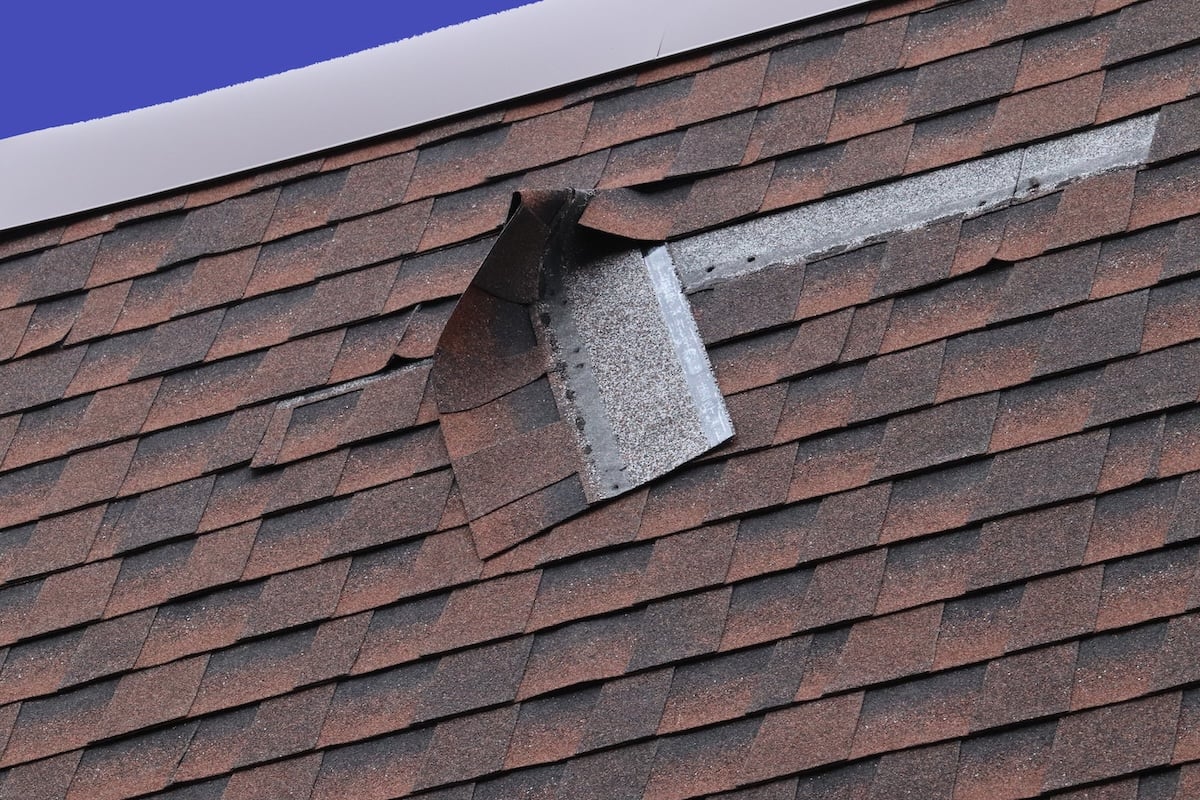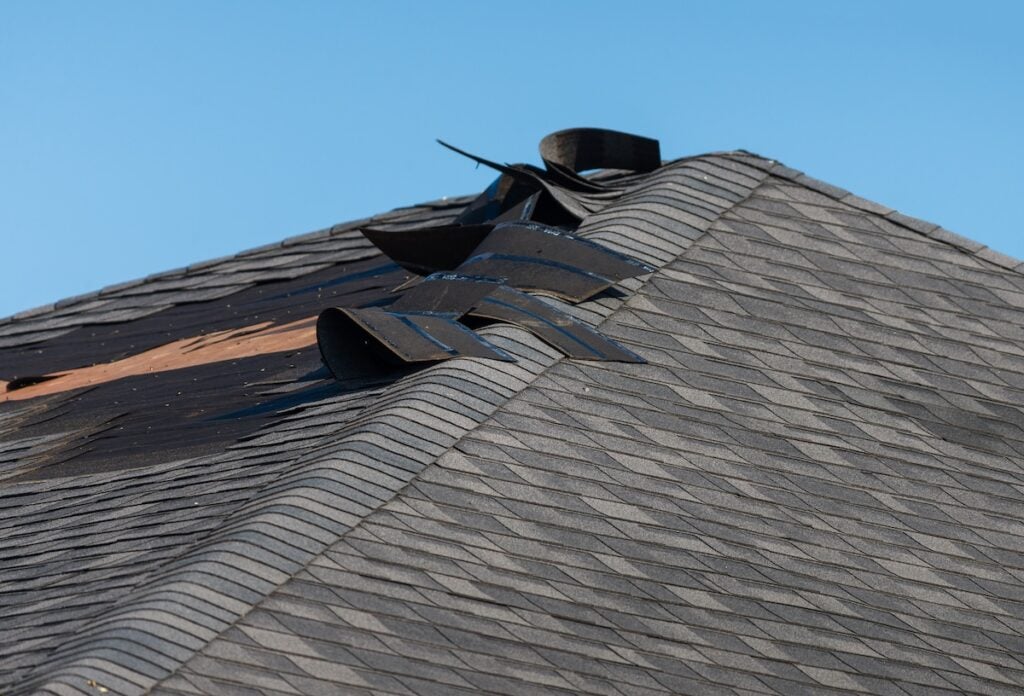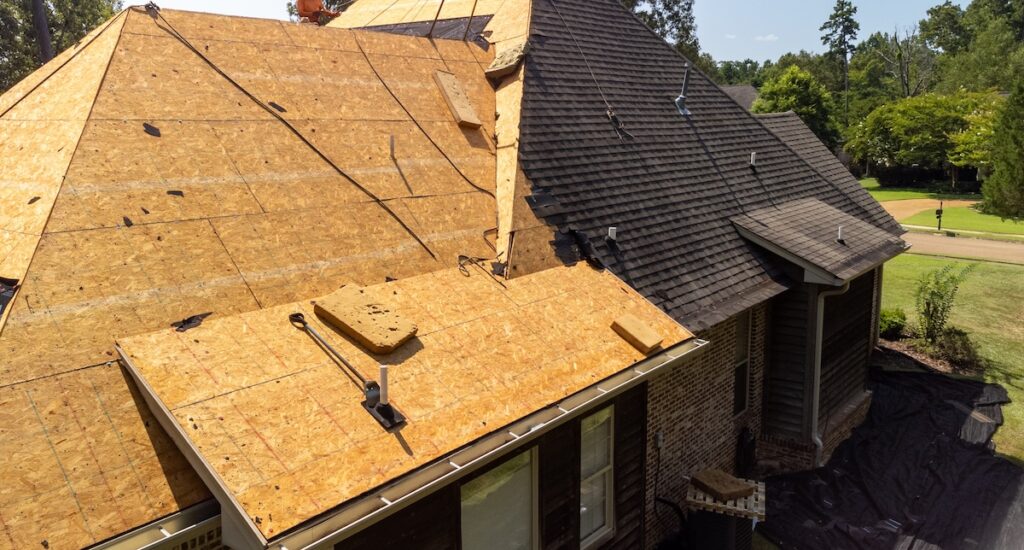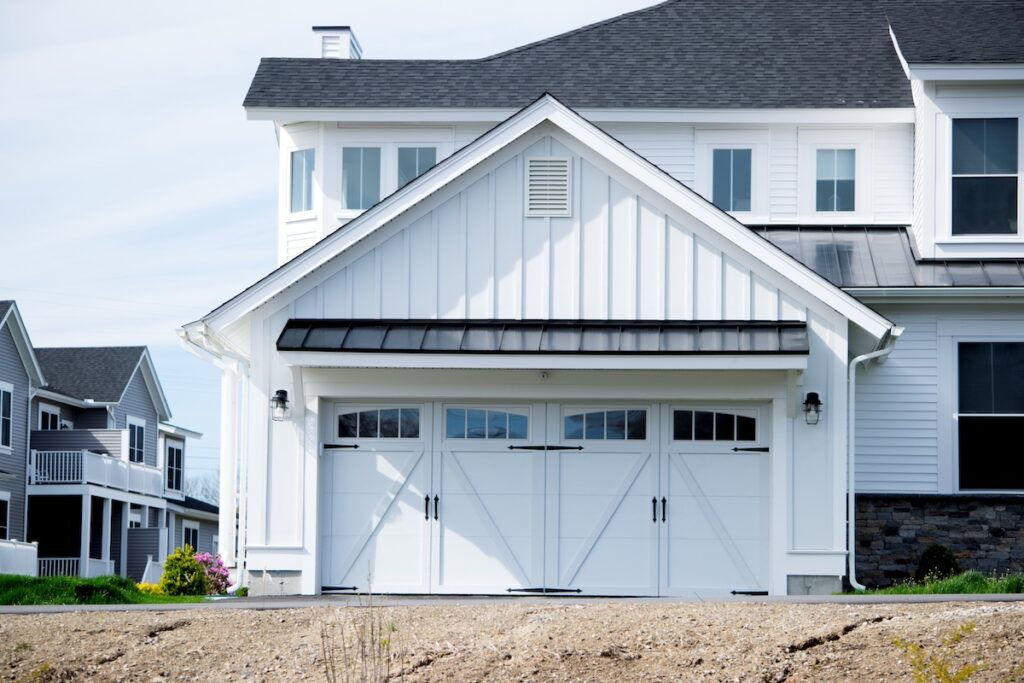
Wind Damage Roof Repair vs Replacement (2025 Guide)
Wind damage roof repair is often one of the first things Texas homeowners think about after a major storm. High winds can rip shingles loose, bend flashing, or tear sections of roofing entirely away. But one of the most common questions homeowners ask is whether they need simple repairs or a full roof replacement. The answer depends on the extent of the damage, the age of your roof, and the long-term protection you want for your home.
- Peace of mind: Choosing the right solution prevents ongoing leaks and repeated repairs.
- Value for money: Knowing when to repair and when to replace saves long-term costs.
- Home protection: The right decision keeps your roof strong against future Texas storms.
❗️ Why Wind Damage Is a Major Concern in Texas
Texas weather is notorious for sudden shifts, and strong windstorms are common in Carthage and surrounding areas. Even without hail or heavy rain, straight-line winds can lift shingles, tear flashing, and expose underlayment. Over time, these weak points allow moisture to seep in and compromise your roof’s integrity.
The problem with wind damage is that it often looks minor from the ground. A few curled shingles or a small patch of missing roofing may not seem like a big deal, but each one is an entry point for water. Professional inspections are crucial to reveal the full scope of the issue before deciding whether to repair or replace.

⚠️ Common Signs of Wind Damage
Two sentences of text here: Spotting wind damage quickly gives you more options for repair before problems spread. Here are some of the most common warning signs.
- Missing or Loose Shingles: High winds often lift shingles completely off the roof, leaving bare patches of underlayment exposed. Even when shingles remain in place, they can loosen or crease, which weakens their ability to shield against rain.
- Curling or Lifting Tabs: Sometimes shingles look intact, but their edges are lifted. This small gap allows water to seep underneath and can spread damage across a wider section of the roof.
- Damaged Flashing: Metal flashing around chimneys, valleys, or vents can bend or separate under high winds. These areas are especially vulnerable to leaks if not repaired promptly.
- Granule Loss: Wind can strip protective granules from shingles, leaving them smooth and vulnerable to sun and moisture damage. Check gutters and downspouts for granule buildup after a storm.
- Interior Leaks or Stains: Water stains on ceilings or in the attic are strong indicators that wind damage has already allowed moisture inside. These leaks can spread quickly, especially if another storm follows soon after.
🛠️ Wind Damage Roof Repair: What It Involves
When damage is localized or relatively minor, repair is often the best option. Repairing wind damage involves addressing only the affected areas, keeping costs lower and disruption minimal.
Shingle Replacement
Roofers can replace missing or broken shingles, ensuring the new materials match your existing roof. Proper installation prevents further lifting or curling.
Flashing Repairs
Bent or loosened flashing can be resealed or replaced. Restoring this barrier keeps water out of vulnerable areas like valleys and chimneys.
Sealant and Fastener Checks
High winds may loosen nails or dry out sealant. During a repair, contractors reseal exposed areas and secure loose components to strengthen the system.
Advantages of Roof Repairs
- Cost savings: Repairs are typically less expensive than full replacement.
- Speed: Localized fixes can be completed quickly.
- Preserves lifespan: When done promptly, repairs extend the service life of your existing roof.

👉 When Roof Replacement Is the Better Option
Two sentences of text here: Repairs are not always enough to protect your home after major wind damage. In some cases, replacement is the smarter investment.
- Widespread Damage: If wind has lifted shingles across multiple slopes or caused consistent leaks, patch repairs won’t be enough. Replacement ensures a complete solution.
- Aging Roofs: If your roof is already near the end of its lifespan, repairs may only provide temporary relief. A replacement gives you a fresh start with new materials and warranties.
- Hidden Structural Damage: Sometimes wind not only damages shingles but also weakens the decking beneath. In these cases, replacement allows roofers to address deeper issues.
Advantages of Roof Replacement
- Long-term protection: A new roof ensures decades of reliable performance.
- Better storm resistance: Modern materials are designed to handle Texas weather more effectively.
- Increased home value: A new roof boosts curb appeal and resale value.
📋 Comparing Wind Damage Roof Repair vs Replacement
Two sentences of text here: Deciding between repair and replacement requires weighing several factors. Homeowners should consider cost, condition, and long-term goals before making a decision.
- Cost Considerations: Repairs are less expensive upfront, but repeated storm damage can add up. Replacement has a higher initial cost but often saves money over time by preventing recurring issues.
- Time and Convenience: Repairs are quick and cause less disruption to your home. Replacements take longer but provide a clean slate and long-term peace of mind.
- Insurance Coverage: Many insurance policies cover wind damage, but coverage may vary between repair and replacement. Professional contractors can help document damage for your claim.
- Future Storm Preparedness: If your home frequently experiences severe winds, replacement with impact-resistant materials may be a better investment than repeated repairs.
✅ 7 Steps Professionals Take After Wind Damage
Here’s a clear step-by-step outline of how roofing experts handle wind damage in Carthage and surrounding areas.
- Initial inspection: Roofers assess the extent of visible and hidden damage safely.
- Photo documentation: Detailed pictures are taken for both homeowner and insurance purposes.
- Damage report: Contractors outline whether repairs or replacement are recommended.
- Insurance coordination: Professionals help you navigate the claims process and meet with adjusters.
- Temporary protection: Tarps or sealants are applied if active leaks are present.
- Repair or replacement work: Depending on findings, contractors complete localized repairs or schedule a full roof replacement.
- Final quality check: The finished roof is inspected to ensure it is storm-ready and watertight.

💨 How to Prevent Future Wind Damage
While no roof is invincible, there are steps homeowners can take to reduce risk.
- Upgrade materials: Consider impact-resistant shingles or metal roofing for stronger performance.
- Regular inspections: Schedule seasonal inspections to catch small issues before storms hit.
- Trim nearby trees: Prevent branches from striking or scraping the roof during high winds.
- Maintain gutters and flashing: Keeping these in good shape helps your roof handle storm stress.
🏠 Choosing the Right Path for Your Roof
Wind damage roof repair and roof replacement both play important roles in protecting Texas homes. Repairs are effective when damage is limited, while replacement makes sense for older roofs or widespread issues. By weighing costs, roof condition, and long-term goals, you can choose the solution that keeps your home safe and efficient.
M&M Roofing proudly serves Carthage and surrounding areas with expert inspections, repairs, and replacements tailored to Texas weather. Whether you need a small patch or a brand-new roof, our team delivers quality you can count on. Contact M&M Roofing today to schedule your free estimate and take the next step toward a secure, storm-ready roof.
